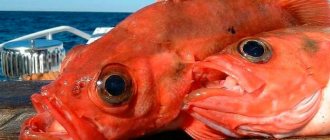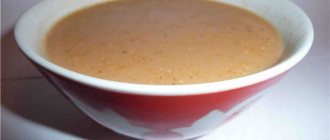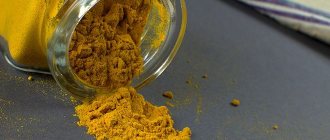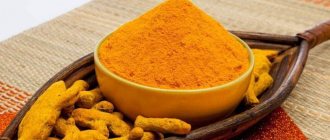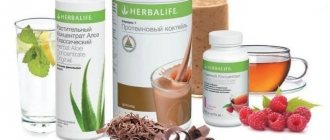Seafood on our tables will no longer surprise anyone.
In all supermarkets, both in winter and summer, you can buy frozen sea cocktails.
But this seafood semi-finished product must be properly cooked.
Knowing how to prepare a seafood cocktail, you can get not only real pleasure from such food, but also benefits.
a brief description of
Being a universal product, sea cocktail is used in recipes for a variety of popular dishes. This assortment has an excellent taste, pleasant aroma, and brings great benefits to the body and figure.
What does it contain?
The composition of a sea cocktail usually includes in certain proportions:
- squid;
- octopuses;
- shrimps;
- shellfish;
- cuttlefish;
- mussels
Frozen packages include seafood that is cleaned and ready to cook. The composition of the cocktail in brine, marinade and oil, respectively, includes brine, sauce and vegetable oil, the composition of which depends on the manufacturer.
What do they eat with?
The options for what seafood is eaten with vary depending on the type of cocktail itself. For example, marinated or in oil, they are eaten as an independent dish, or used in the preparation of sandwiches or main courses.
The prepared assorted frozen product is eaten with vegetables, rice or pasta.
What to eat with a seafood cocktail?
1. The best addition to it is white wine. Still mineral water and citrus juice are also welcome. Oysters are served with champagne or light beer.
2. The best side dish for a seafood cocktail is rice. Having a neutral taste, it helps the seafood cocktail to reveal its taste.
3. The best seasoning for a seafood cocktail is lemon juice. As for spices, they must be used very carefully so as not to drown out the delicate taste of seafood.
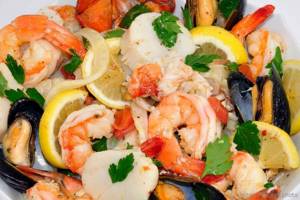
How to choose?
You need to choose a seafood cocktail according to several criteria. Firstly, important information is the expiration date and country of origin (products from Europe are considered the best).
Packaging with frozen assorted foods should be assessed for integrity, and then the products themselves should be examined. Sticky seafood indicates that it has been defrosted and re-frozen, which means that the assortment is spoiled and is not suitable for consumption.
Canned, pickled and seafood cocktails in oil are also assessed based on the integrity of the packaging, production time and composition. Ideally, it should contain only seafood and marinade; the presence of preservatives and other additives is unacceptable.
Adviсe. We buy sea cocktail and seafood
It is better not to buy fresh seafood: there is a high probability of buying stale goods. In addition, there is a risk of becoming infected with parasites that live inside fish, squid, shrimp and other marine life. You can quickly get rid of larvae only by freezing below - 40 ° C or heating to + 6 ° C, while when salted they can remain viable for several months.
It is best to buy a seafood cocktail frozen using the “shock freezing” method - rapid cooling to -40 degrees. At the same time, the water does not have time to turn into large ice crystals that destroy the cells. As a result, the structure, taste of the product, and nutrients are preserved.
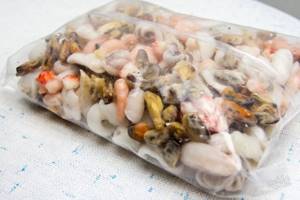
When buying a package of sea cocktail, knead it in your hands. If ice crystals squeak under your fingers, it means that the product has already been partially or completely defrosted and is not worth taking.
You can prepare not only a traditional salad from a sea cocktail, but literally anything you want. Their meat goes well with vegetables, cereals, cheese, and legumes.
How to store?
The seafood cocktail should be stored in the refrigerator. The frozen product is placed in the freezer, where at a temperature of about -18 ºC its shelf life is 18 months.
To defrost before cooking, it is recommended to place the assortment on a plate and put it in the refrigerator. This way the seafood will be completely defrosted in a few hours.
Sea cocktail in oil is also stored in the refrigerator. © https://ydoo.info/product/morskoy-kokteyl.html After opening the package, the product shelf life is 72 hours. After the expiration of the specified period, it is not recommended to eat it, as well as freeze it.
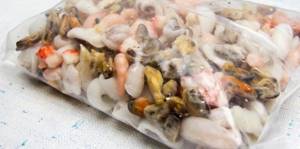
Cooking methods
Often a seafood cocktail in oil is eaten just like that, but frozen assorted cocktails can be used in more interesting recipes.
How to fry in a frying pan?
Sea cocktail is fried in a frying pan with garlic. The dish is prepared like this:
- pour a few drops of vegetable oil into the frying pan;
- Peel the head of garlic and cut the cloves into pieces;
- put the garlic in the frying pan, and after a few minutes the frozen seafood cocktail;
- cook over medium heat for 5-7 minutes;
- At the end, the dish is salted, peppered and, if desired, tomato sauce is added to it.
How to put it out?
An incredibly tasty dish would be a stewed sea cocktail with creamy sauce. To prepare it, take 0.5 kg of seafood (the frozen cocktail is pre-defrosted).
Place the frying pan on the stove, add a small amount of olive oil and heat over medium heat. At this time, prepare the onion and garlic: cut the medium onion into small pieces, and chop the garlic using a garlic press. Vegetables are poured into a frying pan and fried for 2-3 minutes.
To the fried vegetables add 150 ml of cream, 2 tbsp. l. soy sauce, a pinch of salt and pepper. All ingredients are cooked for another 2-3 minutes, stirring constantly to avoid the cream boiling.
Lastly, add the seafood cocktail and simmer the food for 7 minutes.
How to bake in the oven?
The following unusual recipe for making a sea cocktail suggests baking it in the oven with vegetables. To do this, take a package of seafood, defrost and cook for 2-3 minutes.
At the same time, prepare the vegetables: cut 2 tomatoes, 2 bell peppers and 2 onions into pieces. Place the seafood cocktail, all the vegetables in a baking dish and pour in the sauce.
For the sauce you need:
- melt 2 tbsp. l. butter;
- add 1 tbsp to it. l. flour;
- mix 3-4 tbsp. l. sour cream with a little water;
- add sour cream, salt, pepper, 100 g of chopped hard cheese and chopped herbs to the mixture of butter and flour;
- Stirring constantly, cook the sauce until the cheese is completely dissolved.
Place the baking dish in the oven for 15 minutes, preheated to 190 ºC. After the specified time, sprinkle the dish with grated cheese and chopped walnuts and return it to the oven for 5-7 minutes. After this, take out the form, sprinkle with lemon juice and serve the dish to the table.
How to cook?
There is no clear solution on how to properly brew a seafood cocktail. You can do this in two ways: on the stove and in the microwave.
To cook a frozen seafood cocktail, without defrosting it, lightly tap it on the table or separate the seafood inside the package with your hands.
Pour water into a saucepan, place over medium heat and bring to a boil. Then pour the sea cocktail into the liquid, add salt and pepper, add 2-3 bay leaves and spices to taste and turn the heat to full strength.
After boiling, the seafood is cooked for 7 minutes. Then the liquid is drained using a colander, and the seafood cocktail is sprinkled with olive oil and lemon juice.
A defrosted seafood cocktail is cooked in the microwave. Place the products in a deep plate, add a pinch of salt, pepper, a few drops of lemon juice, soy sauce (at the rate of 100 g of sauce per 500 g of seafood) and put it in the microwave. At a power of 500 W, the cocktail is brewed for 10 minutes.
How to steam in a slow cooker?
Steamed seafood cocktail can be prepared in a double boiler or in a slow cooker. To do this, place a package of frozen seafood in a bowl and cook for 15-20 minutes. The finished cocktail is poured with olive oil and lemon juice.
To get a complete dish, you can cook vegetables at the same time as seafood: place a bag of frozen vegetables on a bowl, cook for the same amount of time as seafood, and then mix with a cocktail, garnish with fresh herbs and serve.
How to marinate at home?
To marinate a seafood cocktail at home, you will need 500 g of seafood and a homemade marinade. The latter is done this way:
- 5 tbsp. l. vegetable oil mixed with 2 tbsp. l. 9% vinegar;
- grind 3 cloves of garlic, which are mixed with oil and vinegar;
- add 2 tsp to the mixture. sugar, 1 tsp. salt, a pinch of black and red ground pepper.
The seafood cocktail is defrosted, poured into boiling water and cooked for 2-3 minutes. Then the seafood is placed in a glass jar, filled with marinade and placed in the refrigerator overnight. The very next day, the marinated cocktail will be ready to eat.

How to grill?
Preparing a grilled sea cocktail starts with the sauce: mix a peeled garlic clove, 2-3 sprigs of fresh thyme, 1 tsp. dried rosemary and 50 ml olive oil.
Thawed seafood is poured with sauce and left for 20 minutes. Then they start cooking: heat the grill, grease it with vegetable oil, lay out the seafood cocktail and fry for 7-10 minutes. The finished assortment is placed on a plate and sprinkled with lemon juice.
Mussels and scallops
These are bivalves. They are distinguished by tender meat and high nutritional value. You can bake, boil (including in cucumber brine or white wine) and fry. Stores most often sell frozen briquettes made from edible parts of shellfish. It is enough to boil them in salted water, and you have an excellent base for salad, pilaf and other dishes in which meat is usually used.

Benefits and harms
The beneficial properties of the cocktail are due to the variety of seafood that is included in its composition. Regular consumption of freshly prepared or sea cocktail in oil will allow you to:
- normalize blood pressure;
- reduce the risk of developing atherosclerosis;
- stabilize blood sugar levels;
- improve the functioning of the nervous system;
- strengthen memory;
- improve sleep;
- prevent the development of cancer.
Pregnant women and nursing mothers should take into account the composition of the product when consuming a sea cocktail. If it contains mussels, rapana, oysters and lobsters, you should avoid the product, as it can cause allergies or other negative reactions of the body. Other seafood is allowed provided that it is cooked for 15 minutes.
Harm from sea cocktail is rarely observed. The main contraindication to its use is individual intolerance to any seafood that is included in the composition. Another danger lies in parasites found in improperly prepared seafood. And although the product is prepared in production in accordance with government regulations, careful heat treatment of seafood will not be superfluous.
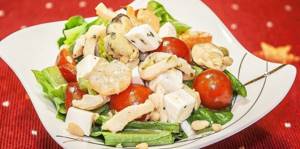
Weight loss and diet
Seafood is considered an excellent choice on a diet. A seafood cocktail while losing weight will not only help diversify the standard menu, but will also bring you closer to the dream of losing extra pounds.
It is advised to avoid assorted foods in oil when dieting (due to their high calorie content), but a fresh product prepared in a dietary manner will only be beneficial.

Seafood dishes:
- easy to digest;
- quickly satisfy the feeling of hunger;
- normalize metabolism;
- stimulate the activity of the endocrine glands;
- saturate the body with essential vitamins and microelements.
All of the listed effects of seafood can make the weight loss process more physiological and safe.
Sea cocktail is a unique assortment of seafood. This product will be an unusual way to decorate a holiday table and please your loved ones with a delicious dish.
What are the benefits of seafood?
For the average resident of our latitudes, a seafood salad turns out to be a festive dish, and a soup containing seaweed is a complete curiosity. However, globalization brings culinary traditions of other peoples into our everyday life, thereby ensuring the opportunity to take the maximum of their positive properties from food products. What qualities are seafood traditionally famous for?
Seafood is an excellent alternative to meat dishes only because it is not inferior to them in protein content. However, the advantage of seafood is that the protein they contain is much easier and faster absorbed by the human body. On average, the calorie content of seafood is estimated at 60-120 kcal per 100 grams.
Seafood is not only a complete source of protein, but also an unparalleled source of polyunsaturated fatty acids, especially Omega-3. Everyone knows that these substances contribute to the full function of the brain, strengthen blood vessels and improve their elasticity, at the same time reduce the level of harmful cholesterol in the blood and normalize intercellular metabolism, and in the long term they can protect against malignant tumors. A sufficient amount of Omega-3 in the body ensures stabilization of the psychological background and improvement of mood, which is perhaps why residents of oceanic regions are so positive and minimally susceptible to depression.
It is known that our body needs a certain amount of certain vitamins and microelements every day - some to a greater extent, some to a lesser extent. A thermally processed seafood cocktail (seafood mix, sold in any supermarket) allows you to cover the body’s daily need for such substances as:
- vitamin A,
- vitamin E,
- B vitamins,
- iodine,
- calcium,
- iron,
- phosphorus,
- potassium,
- sulfur,
- zinc,
- selenium.
It is the content of the last two microelements, that is, zinc and selenium, that makes seafood an excellent aphrodisiac. Penetrating into the human body, zinc and selenium ensure the production of testosterone, and this awakens libido.
Nutritionists prescribe the “marine” diet to those who suffer from diseases of the cardiovascular and digestive systems, as well as excess weight.
When talking about seafood, culinary specialists and nutritionists mean any seafood suitable for human consumption, that is, edible products removed from the depths of the world's oceans, with the exception of vertebrates, that is, fish and whales. This means seafood is shellfish, shrimp, squid, octopus, crab, lobster, and lobster. It would also be useful to consider in detail the benefits and harms of seaweed and red and black caviar.
Shrimps
This seafood usually goes on sale boiled and frozen; the reddish-pink bodies just need to be thawed. Shrimp on the shelves with grayish and greenish colors means a fresh, only chilled product. Shrimp are also popular on sale as part of sea cocktails containing scallops, squid, and mussels. They are served as a snack boiled with lemon, lime and a variety of sauces (chili, tartar, paprika, soy sauce). Shrimp are also used to make a variety of pastes, cocktails, canapés, sandwich butter, and added to sushi, soups and salads.
Among the advantages of their composition are:
- content of essential amino acids,
- content of B vitamins,
- iodine content (good for the thyroid gland),
- magnesium and potassium content (good for the cardiovascular system),
- zinc and selenium content (useful for erectile function),
- Shrimp in the diet is an opportunity to normalize metabolism, reduce the risk of developing allergies and the risk of cancer.
There are also disadvantages to such a product as shrimp:
- they contain a large amount of cholesterol, unless there is a clear opinion about whether this is “good” or “bad” cholesterol,
- Abuse of shrimp can aggravate allergic reactions and even cause intolerance,
- shrimp living in polluted waters are capable of accumulating mercury in their bodies.
Squid
Squid goes on sale in a variety of forms - canned, fresh frozen, chilled, dried. Only the squid carcass is used for food; it is important to peel off the skin. Dishes prepared from squid are quite varied - baked, fried, boiled, stewed, pickled and dried, canned dishes, and of course, as part of a frozen sea cocktail.
The advantages of squid meat are:
- the content of proteins and polyunsaturated fats, which promotes the development of muscle fibers, and therefore its consumption is indicated for people who want to increase muscle volume;
- the content of vitamins B6 and B3, which contributes to the normalization of metabolic processes and the excellent functioning of the gastrointestinal tract;
- potassium content can remove excess fluid from the body;
- selenium content can remove heavy metal salts from the body;
- taurine content helps reduce the level of “bad” cholesterol in the blood and stabilize blood pressure;
Minuses
- In pursuit of a healthy lifestyle, do not rush to consume dried squid - they are considered a snack containing a minimum of the above properties; on the contrary, it is a source of artificial enrichment with salts, which contributes to fluid retention in the body.
Mussels
Bivalve sea mollusks, of the variety of species of which only the common edible one, the Far Eastern giant (black shell), the Mediterranean-Black Sea, the Californian and several other less popular ones are suitable for food. Mollusks live in the waters of seas and oceans in temperate latitudes of both hemispheres. The muscle, mantle, and sometimes the liquid inside the shell are eaten. The meat has a sweetish taste and a subtle incomparable aroma. Shellfish are sold canned, fresh or frozen, and also as part of seafood cocktails.
The advantages of mussels are rightly considered:
- the content of vitamin B12, which takes an active part in the body’s absorption of other elements and vitamins;
- selenium content, a sufficient amount of which in the body is necessary for the complete absorption of iodine;
- the phospholipid content ensures normal liver function;
- the content of magnesium and potassium stimulates the process of hematopoiesis;
- it is a natural antioxidant that strengthens the immune system;
- Vitamin A content improves vision;
- helps prevent arthritis and cancer,
Mussels also have disadvantages, like any food product:
- can cause a very dangerous type of allergies - cross-allergy, caused by the similarity of allergenic structures;
- Contraindicated for bleeding disorders.
Sea kale
Perhaps this is the most popular seaweed consumed by humans as food. It has an original taste and many useful qualities. In Japanese cuisine, there are up to 150 culinary recipes with kelp - these are soups, salads and purees, beans and seafood are stewed with it, and vegetables are wrapped with it. In cuisine adapted to the Slavic eater, kelp is used to season borscht and pickles, stews; zrazy, cutlets, casseroles are prepared with it; dry kelp is ground into powder and used as a seasoning. However, any of these dishes will be perceived as a curiosity, except for the now popular salad, pickled seaweed with various additives (mushrooms, squid, carrots).
pros
- iodine content in organic form, which allows the body to provide its daily dose by consuming only 30 grams of cabbage;
- the content of an analogue of the thyroid hormone thyroidin makes cabbage doubly useful for the thyroid gland, thus normalizing its function in case of hypothyroidism and thyrotoxicosis;
- the content of mannitol and alginic acid ensures cleansing of the gastrointestinal tract from harmful substances and has a mild laxative effect on the principle of sorbents;
- Regular consumption of seaweed improves immunity,
- Regular consumption of seaweed normalizes metabolism and blood cholesterol levels;
- regular consumption of seaweed improves the functions of the cardiovascular, respiratory and central nervous systems;
- regular consumption of seaweed removes heavy metal salts and radionuclides from the body;
- Regular consumption of seaweed stimulates intestinal function;
- Regular consumption of seaweed helps restore prostate function in case of adenoma.
The disadvantages of seaweed are also associated with the iodine content in it; it should not be consumed by persons for whom iodine is contraindicated:
- with nephritis,
- during pregnancy,
- with furunculosis,
- with hemorrhagic diathesis,
- with individual intolerance to iodine and seafood.


